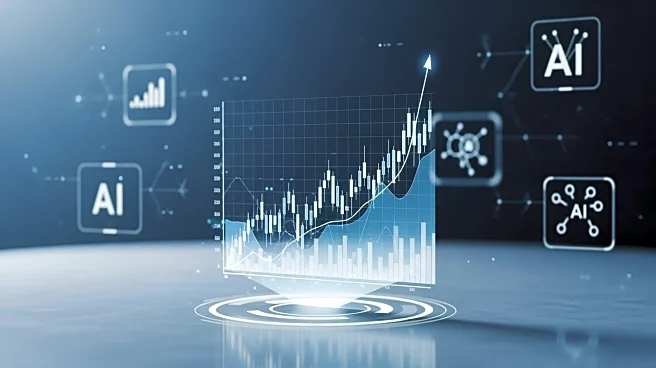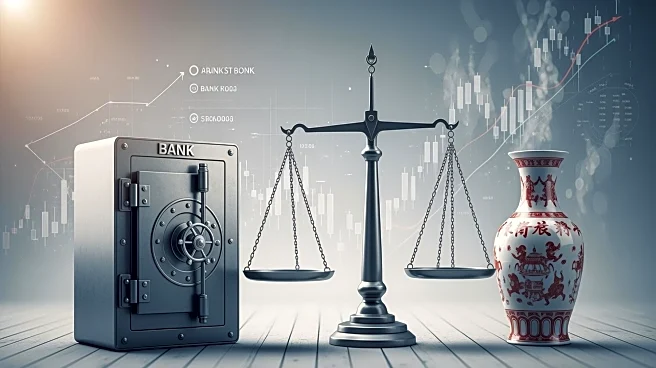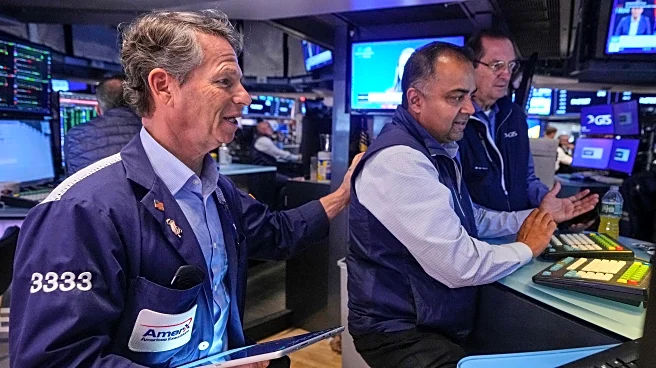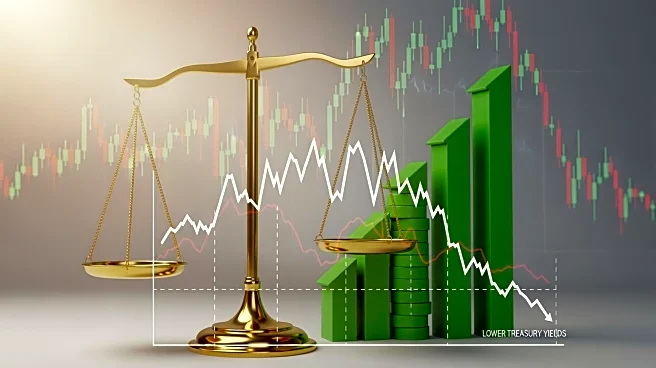What's Happening?
Gold prices have surged significantly in 2025, surpassing $4,300 per ounce, marking a more than 50% increase this year. This rise has outpaced the performance of artificial intelligence stocks, which have also contributed to record levels in the broader
stock market. The increase in gold prices is attributed to global trade concerns, expectations of Federal Reserve rate cuts, and a weakening U.S. dollar. Despite easing trade tensions between the U.S. and China, gold remains a preferred asset for investors seeking to hedge against currency debasement and economic uncertainty.
Why It's Important?
The surge in gold prices underscores a shift in investor sentiment towards hard assets amid economic uncertainties. As central banks and governments face challenges, gold is perceived as a stable investment, offering protection against inflation and currency fluctuations. This trend highlights the ongoing debate between traditional safe-haven assets like gold and emerging sectors such as artificial intelligence, which promise high growth potential. The preference for gold reflects broader concerns about global economic stability and the effectiveness of monetary policies.
What's Next?
While gold has experienced substantial gains, experts suggest it may be due for a short-term correction. Investors are advised to be cautious and consider potential pullbacks as opportunities to increase their holdings. The ongoing developments in global trade policies and monetary strategies will continue to influence gold's trajectory. Additionally, the performance of AI stocks and their impact on the broader market will remain a focal point for investors seeking growth opportunities.
Beyond the Headlines
The rise in gold prices also reflects a broader trend of diversifying away from traditional currency reserves, as seen in increased central bank gold purchases. This shift indicates a reevaluation of global financial systems and the role of gold as a strategic asset. The interplay between gold and AI investments highlights the evolving landscape of asset management, where traditional and innovative sectors coexist and compete for investor attention.















